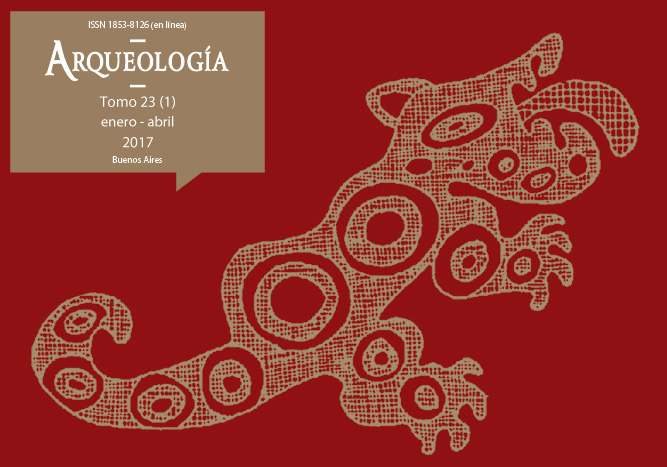New zooarchaeological data from Rincón Chico 15, Yocavil Valley (Catamarca, Argentina)
Keywords:
Yocavil, Rincón Chico 15, Regional Developments, Zooarchaeology
Abstract
This article presents the results of an analysis on the archaeofaunal remains from Trenches 3, 4, 5 and 6 of the Rincón Chico 15 site (Yocavil Valley, Catamarca, Argentina). Rincón Chico 15 was a residential unit and a specialist workshop, inhabited mostly from the 12th to 16th Century (Regional Developments and Inka periods). The data presented here largely corroborates the results of previous zooarchaeological research at the site. Nevertheless, when comparing against earlier reports, there was some divergence in taxonomic and age composition of the Camelidae data. These divergent results from the same site, suggest sampling problems, as well as the variability in economic practices that took place at Rincón Chico 15.Downloads
Download data is not yet available.
How to Cite
Belotti López de Medina, C. R. (1). New zooarchaeological data from Rincón Chico 15, Yocavil Valley (Catamarca, Argentina). Arqueología, 23(1), 99-108. https://doi.org/10.34096/arqueologia.t23.n1.3660
Section
Reports
Authors who publish in this journal agree to the following conditions:
- Authors retain copyright and yield to the journal right of first publication with the work registered with attribution license Creative Commons, which allows third parties to use the published always mentioning the authorship of the work and first publication in this magazine.
- Authors can make other independent and additional contractual arrangements for the non-exclusive distribution of the version of the article published in this issue (p. Eg., Inclusion in an institutional repository or publish it in a book), provided that clearly indicate that the work was published for the first time in this magazine.
- It allows and encourages the author / s to publish their work online (eg institutional or personal pages) before and during the process of revision and publication, as it can lead to productive exchanges and greater and more rapid dissemination of work published (See The Effect of Open Access).





(1)13.png)






1.jpg)
1.jpg)


13.png)
1.png)


(1)1.png)









